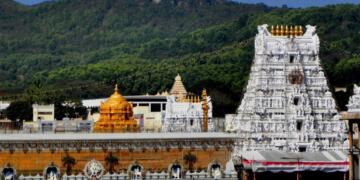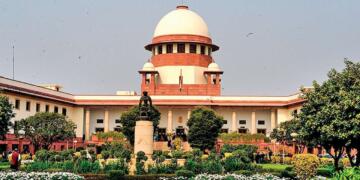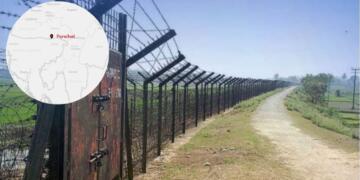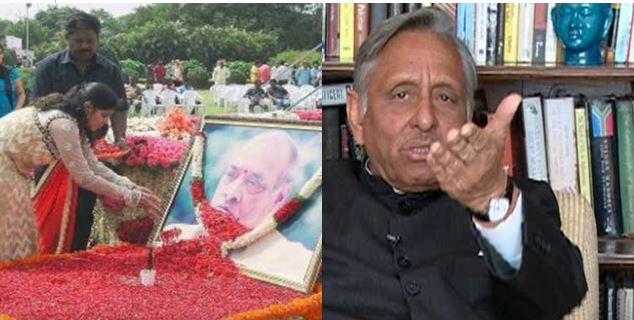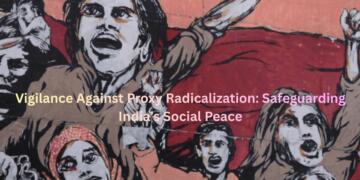At at the release of ‘Half Lion — How P.V. Narasimha Rao Transformed India’ penned by Vinay Sitapati, Mani Shankar Aiyar kicked a controversy by accusing PV Narasimha Rao as the sole cause of the Babri Masjid demolition.
Former Prime Minister P.V. Narasimha Rao’s “pro-Hindu mindset” encouraged the destruction of the Babri Masjid in Ayodhya in 1992, senior Congress leader Mani Shankar Aiyar said on Monday.
“Rao was completely convinced that by talking to the sadhus and saints he could solve the problem (Ayodhya’s Ram temple issue),” Mani Shankar Aiyar said.
Mani Shankar Aiyar recalled that on November 14, 1992, his “Ram-Rahim yatra” for peace and communal harmony was stalled at Faizabad and he was arrested by Uttar Pradesh Police.
“I was summoned by Rao, he told me he had no problem with my yatra but he did not agree with my definition of secularism as India is a Hindu-majority country. I told Rao that’s exactly how the BJP argues,” Mani Shankar Aiyar said while countering contentions from the book author.
Congressman Natwar Singh who also worked closely with Rao, described the Babri Masjid demolition on December 6, 1992, as “the biggest failure” of the then Prime Minister Rao, who otherwise, according to them, took bold and timely decisions on economic reforms.
Author Sitapati, a product of National Law School at Bengaluru and Harvard University, maintained that Narasimha Rao had actually only “erred” in judging the situation and that “it was only the Congress creation that Rao conspired for the mosque’s demolition”.
Senior journalist Shekhar Gupta said the ploy to “demonise” Rao on the Babri issue was a Congress attempt only to win over the Muslims by saying that “look, Rao is responsible for the Babri demolition and not the party”.
“The Muslims of UP are not fools; they knew pretty well who opened the locked gates of the disputed structure,” Gupta said in reference to a decision of the then Rajiv Gandhi government.
Mani Shankar Aiyar, however, maintained that even after the mosque’s demolition, Rao told a Congress Parliamentary Party meeting in Delhi that “even kings in ancient India used to consult sages and sadhus and so did I”.
“Was this a mindset of a 20th century Prime Minister or 12th century? This mindset actually encouraged the destruction of Babri Masjid,” Mani Shankar Aiyar said.
The Congress leader maintained that Rao could have dismissed the then Kalyan Singh government and imposed President’s Rule in Uttar Pradesh.
“In fact, there was a precedent of such President’s Rule. In apprehension that things can go out of control in Tamil Nadu, the then DMK government was dismissed and central rule imposed earlier without recommendation from the state Governor.”
However, former bureaucrat and ex-Cabinet Secretary Naresh Chandra strongly defended Rao’s decision not to impose President’s Rule in Uttar Pradesh as that would have been an act with constitutional flaw.
“The then UP Governor did not recommend President’s Rule but in the case of Tamil Nadu, as argued by Mani Shankar Aiyar, the Governor (Surjeet Singh Barnala) had only said he is unable to make up his mind whether to impose President’s Rule or not,” Chandra said.
Speaking on the occasion, Natwar Singh described the demolition of the Babri mosque as “the biggest failure” of Rao’s tenure.
He said that after the assassination of Rajiv Gandhi, Shankar Dayal Sharma was the first choice of Sonia Gandhi for prime ministership.
“On the advice of P.N. Haksar, Sonia Gandhi sent me and Aruna Asif Ali to meet Shankar Dayal Sharma, but he declined the proposal,” Natwar Singh.
Natwar Singh also threw light on and shared anecdotes about tension in relations between Congress leader Arjun Singh and Narasimha Rao and also between Sonia Gandhi and Rao, especially in the context of probe into Rajiv Gandhi’s assassination.
“Rao completely denied the charge and said he had sent others, including P. Chidambaram, to Sonia Gandhi with the information on the probe,” Singh said.
Quotes sourced from News X
Watch what Mani Shankar Aiyar said:
Congress’ mistreatment of PV Narasimha Rao and his achievements
In a speech to mark the 125th anniversary of the Congress, the party president Sonia Gandhi, praised contributions of all Congress prime ministers except PV Narasimha Rao.
All his contributions were either accredited to Rajiv Gandhi or Manmohan Singh.
When he died, there were no arrangements made to receive the body and place it atop a platform for public darshan. No flowers were provided by the congress government. There was no shamiana, there were no carpets. There was no one to control the mourning crowds. The congress president came for a couple of minutes and vanished.
And thus died, PV Narasimha Rao, the most underrated prime minister of India, a genius politician, a true statesman and the architect of modern India.
PV Narasimha Rao was the first and only right winger prime minister from the Congress clan. A nationalist to the core, he was born in the Hyderabad state of British India. Not many know that this astute politician and economist par excellence was also a trained Guerrilla fighter. He had ambushed the Nizam’s army along with his accomplices, many-a-times. His political prowess and planning genius was identified and nurtured under the guidance of Indira Gandhi. PV Narasimha Rao was fluent in 13 languages, was well versed with subjects related to economics, law, history, politics and arts. In the political circles, Rao was fondly addressed as the scholar amongst the politicians.
In late 1980s, Soviet Union began to crack and by 1991 it was split into 15 nations. Also the Iraq and Kuwait were busy fighting the Big Daddy, US. As a result of which oil prices skyrocketed. India’s primary buyer was down and out, and heavy money spent on costly oil imports drained the Indian economy. Hence India was on its knees. India at the same time was also suffering from a leadership slump. Rajiv Gandhi was out on charges of corruption. Incompetent politicians were playing the game of musical chairs with the top seat of the nation.
PV Narasimha Rao entered the prime minister office amongst the turmoil. He started working on a plan which was to be known as the liberalisation of the Indian economy later on. The reforms progressed furthest in the areas of opening up to foreign investment, reforming capital markets, deregulating domestic business, and reforming the trade regime. Public sector was privatized. And more money was pumped into infrastructure. India was opened to foreign trade thereby stabilizing the dwindling economy. After I.G. Patel (ex-governor of Reserve Bank of India) declined Rao’s offer of occupying the finance minister chair, Rao chose Manmohan Singh, a champion economist and a reformer at heart as the Finance minister of India. PV Narasimha Rao had an eye for talent and his disciple met all the expectation of his preceptor.
His reforms can be briefly summarized in the following bullet points:
-Abolishing the Controller of Capital Issues which decided the prices and number of shares that firms could issue.
-Introducing the SEBI Act of 1992 and the Security Laws (Amendment) which gave SEBI the legal authority to register and regulate all security market intermediaries.
-Opening up in 1992 of India’s equity markets to investment by foreign institutional investors and permitting Indian firms to raise capital on international markets by issuing Global Depository Receipts (GDRs).
-Starting in 1994 of the National Stock Exchange as a computer-based trading system which served as an instrument to leverage reforms of India’s other stock exchanges. The NSE emerged as India’s largest exchange by 1996.
– Reducing tariffs from an average of 85 percent to 25 percent, and rolling back quantitative controls. (The rupee was made convertible on trade account.)
– Encouraging foreign direct investment by increasing the maximum limit on share of foreign capital in joint ventures from 40 to 51% with 100% foreign equity permitted in priority sectors.
-Streamlining procedures for FDI approvals, and in at least 35 industries, automatically approving projects within the limits for foreign participation.
(Source: pvnarasimharao.in)
The impact of these reforms can be judged from the fact that total foreign investment in India grew from an infinitesimal US $132 million in 1991–92 to $5.3 billion in 1995–96.
PV Narasimha Rao was not just an economist par excellence but was someone who had a great respect for the armed forces of the nation as well. He was the first Congress Prime Minister to increase military spending. It was during his term that militancy in Punjab was finally crushed. PV Narasimha Rao energised the national nuclear security and ballistic missiles program, which paved the path for the successful 1998 Pokhran nuclear tests. PV Narasimha Rao was a tough negotiator and was known to be absolutely unyielding. He directed negotiations to secure the release of Doraiswamy, an Indian Oil executive, from Kashmiri terrorists. He also directed the negotiations for the release Liviu Radu, a Romanian diplomat, who was kidnapped by Sikh insurgents. Rao successfully oversaw the release of the Hazratbal Shrine in Kashmir without causing a single scar on the holy shrine. And he was the first person in Indian Polity to shake hands with Israel and openly call it, an ally.
It is a shame that the current generation (or at least the most of it) doesn’t really know PV Narasimha Rao and/or identify his contributions to this great nation of ours. The congress top brass has made every possible effort to make sure that this man goes down in History as a nobody.
After all PV Narasimha Rao changed the name of the Congress Party from Congress (Indira) to Bhartiya Rashtriya Congress (Indian National Congress) and rejected the candidature of Sonia Gandhi as the Congress President with this golden quote of his “Congress Party should be treated like a train where the compartments have to be attached to an engine belonging to the Nehru-Gandhi family or were there other alternatives?”
But the nation of 1.25 billion will never forget its saviour, a genius, a legend and arguably the best prime minister of India.


